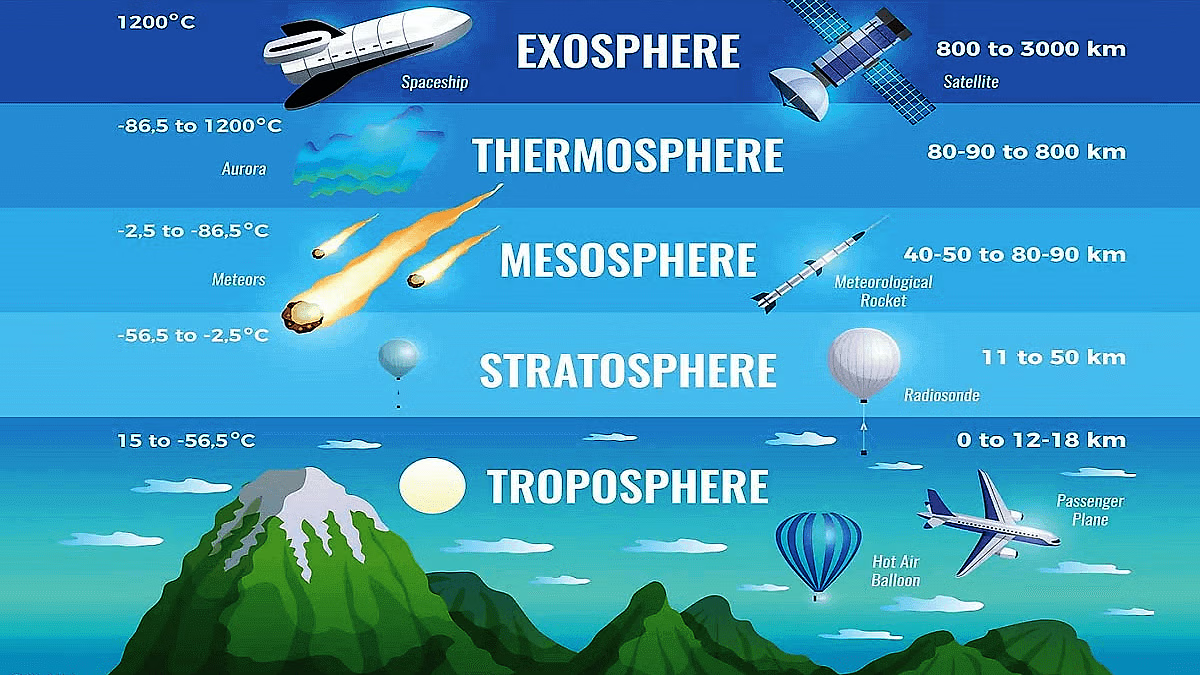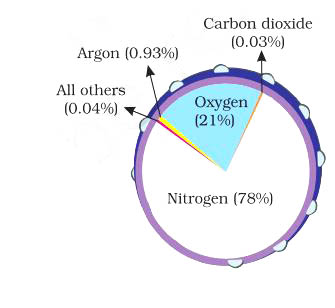- Filter By :
- Geography
- History
- Indian Heritage & Culture
- Indian Society
-
Q. Analyze how the characteristics of the troposphere make it the principal layer for weather phenomena. (150 words)
05 May, 2025 GS Paper 1 GeographyApproach
- Begin with a brief definition and vertical extent of the troposphere, explain its structural and compositional features.
- Highlight how these features facilitate weather processes like cloud formation, and precipitation.
- Conclude suitably.
Introduction
The troposphere is the lowest layer of Earth’s atmosphere, extending from the surface up to around 8–18 km depending on latitude and season. It contains about 75% of the atmospheric mass and almost all water vapor, making it the primary arena for weather phenomena such as clouds, precipitation, and storms.
Body
Troposphere: Key Characteristics Relevant to Weather Phenomena
- Temperature Gradient and Lapse Rate: In the troposphere, temperature decreases with altitude (about 6.5°C per km), causing warm air to rise.
- As it rises, it cools and condenses, forming clouds and releasing heat, which further drives upward motion, crucial for storms and cyclone development.
- E.g, Indian Monsoon driven by pressure gradients and moisture transport within the troposphere.
- Planetary Boundary Layer Dynamics: The lowest part of the troposphere is the Planetary Boundary Layer, which is directly influenced by surface processes like evaporation, friction, and terrain heating.
- It is characterized by turbulent mixing, which regulates local wind patterns, pollutant dispersion, and microclimate variations.
- Composition of Gases: The troposphere holds nearly all atmospheric water vapor, driving the hydrological cycle (rain, snow, fog) and regulating humidity.
- It also contains 78% nitrogen, 21% oxygen, and trace gases like CO₂ and methane, which absorb infrared radiation and contribute to the greenhouse effect, influencing Earth's temperature.
- Cloud and Storm Formation: All cloud types, from cirrus to cumulonimbus, form within the troposphere.
- Violent weather events like thunderstorms, tornadoes, and tropical cyclones originate in this layer due to the presence of instability, moisture, and lift.
- Tropopause as a Lid: The tropopause marks the upper boundary of the troposphere and acts as a thermal lid, preventing vertical mixing beyond it.
- This containment ensures that weather remains confined to the troposphere, making it the only layer where such phenomena dominate.
Conclusion
The dynamic and unstable nature of the troposphere, with its rich moisture content, thermal gradient, and active wind systems, makes it the cradle of all weather phenomena on Earth. Understanding its behavior is crucial in enhancing agricultural planning, and disaster preparedness in a warming world.
To get PDF version, Please click on "Print PDF" button.
Print PDF







